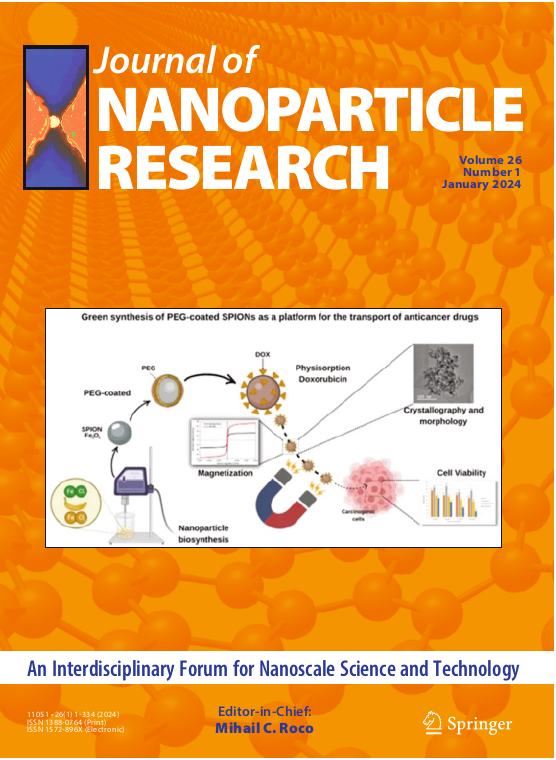蔗糖和柠檬酸钠水热合成碳纳米点:结构和光谱性质的可重复性
IF 2.6
4区 材料科学
Q3 CHEMISTRY, MULTIDISCIPLINARY
引用次数: 0
摘要
获得具有高度可重复性的样品是纳米颗粒在工业和生物医学应用的重要先决条件。本研究以蔗糖和柠檬酸钠为原料,采用水热法(190°C, 1 h)合成了碳纳米点(CNDs),所得纳米颗粒的结构和光谱性质具有较高的重复性。在三组样品中,每组4个样品(12个连续合成),我们在CND表面组成和荧光带位置的定量参数上没有发现统计学差异(方差分析p值>; 0.05)。CND的大小、荧光量子产率和稳态荧光的一些参数也显示出良好的重复性。本文章由计算机程序翻译,如有差异,请以英文原文为准。
Hydrothermal synthesis of carbon nanodots from sucrose and sodium citrate: repeatability of structural and spectral properties
Obtaining samples with highly reproducible properties is an important prerequisite for nanoparticles in industrial and biomedical applications. In this work, we synthesized carbon nanodots (CNDs) from sucrose and sodium citrate by hydrothermal method (1 h, 190 °C) and showed high repeatability of structural and spectral properties of the obtained nanoparticles. In three groups of four samples each (12 consecutive syntheses), we did not see a statistically significant difference in the quantitative parameters of the CND surface composition and the position of the fluorescence bands (ANOVA p-value > 0.05). The CND size, fluorescence quantum yield, and some parameters of steady-state fluorescence also show good repeatability.
求助全文
通过发布文献求助,成功后即可免费获取论文全文。
去求助
来源期刊

Journal of Nanoparticle Research
工程技术-材料科学:综合
CiteScore
4.40
自引率
4.00%
发文量
198
审稿时长
3.9 months
期刊介绍:
The objective of the Journal of Nanoparticle Research is to disseminate knowledge of the physical, chemical and biological phenomena and processes in structures that have at least one lengthscale ranging from molecular to approximately 100 nm (or submicron in some situations), and exhibit improved and novel properties that are a direct result of their small size.
Nanoparticle research is a key component of nanoscience, nanoengineering and nanotechnology.
The focus of the Journal is on the specific concepts, properties, phenomena, and processes related to particles, tubes, layers, macromolecules, clusters and other finite structures of the nanoscale size range. Synthesis, assembly, transport, reactivity, and stability of such structures are considered. Development of in-situ and ex-situ instrumentation for characterization of nanoparticles and their interfaces should be based on new principles for probing properties and phenomena not well understood at the nanometer scale. Modeling and simulation may include atom-based quantum mechanics; molecular dynamics; single-particle, multi-body and continuum based models; fractals; other methods suitable for modeling particle synthesis, assembling and interaction processes. Realization and application of systems, structures and devices with novel functions obtained via precursor nanoparticles is emphasized. Approaches may include gas-, liquid-, solid-, and vacuum-based processes, size reduction, chemical- and bio-self assembly. Contributions include utilization of nanoparticle systems for enhancing a phenomenon or process and particle assembling into hierarchical structures, as well as formulation and the administration of drugs. Synergistic approaches originating from different disciplines and technologies, and interaction between the research providers and users in this field, are encouraged.
 求助内容:
求助内容: 应助结果提醒方式:
应助结果提醒方式:


